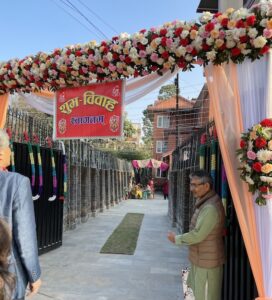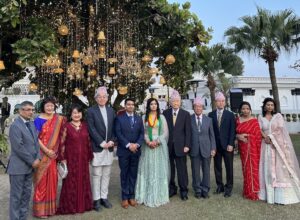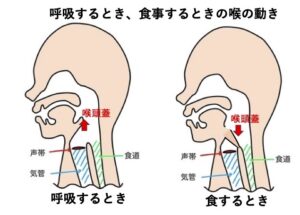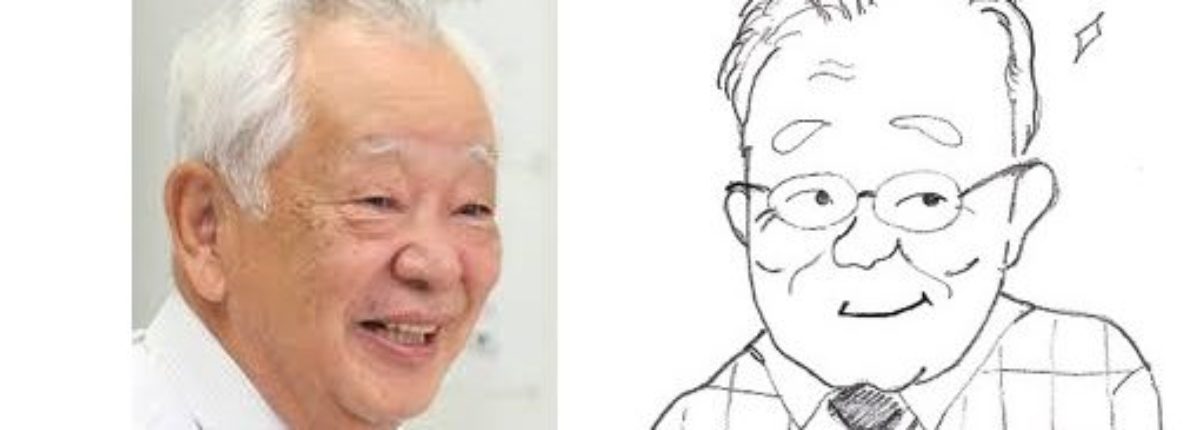On December 3, I departed Kansai Airport with my daughter, Mayuko. After spending two nights in Bangkok, we finally arrived in Kathmandu, Nepal. There is a time difference of 3 hours and 15 minutes. I was able to attend the wedding ceremony of the son of my close Nepali friend, Professor Pokharel. After an 8-day trip, I safely returned to chilly Japan on the morning of December 10.
Nepali weddings are held over three days.
The first day is hosted by the groom’s side, the second day by the bride’s side, and the third day is the main event hosted jointly by both families.
Each family has over 100 members, and including acquaintances like us, there were over 500 attendees, making it a truly grand celebration. From Japan, there were six participants: Professor Hideki Yamamoto and his wife from AMDA Japan, who contributed to the establishment of a children’s hospital in Nepal, and two members of Mr. Pokharel’s host family from his time studying in Japan.

On the first day, the ceremony was held at the Pokharel residence and was attended only by the groom’s side. Around the numerous gifts from the bride’s side, children joyfully danced, and everyone ate heartily and enjoyed lively conversations.
The second day was hosted by the bride’s side and took place at a hotel. In the garden, a band played Nepali folk music, while various rituals continued endlessly from morning to night. One particularly interesting ritual involved washing the bride’s feet, where relatives took turns sprinkling water over her feet. It seemed to symbolize the bride leaving her parental home and moving into her husband’s household.

The third-day ceremony took place in the evening in a hotel garden, attended by many guests. Later in the evening, a banquet was held in a large hall with round tables, similar to Japanese weddings. However, unlike Japanese receptions where speeches are made on stage with a microphone, here everything was conducted face-to-face in a more personal manner, which made the event quite lengthy. Despite being the main ceremony, the groom and bride had already been introduced earlier, making the atmosphere relaxed and lively.

This tradition of celebrating weddings with such large gatherings shows that the family system is still deeply rooted in Nepali society. That said, the bride and groom, both studying in the United States, were set to return there just two days after the wedding. In 10 years, Nepali wedding customs might change significantly.
December 11, 2024








